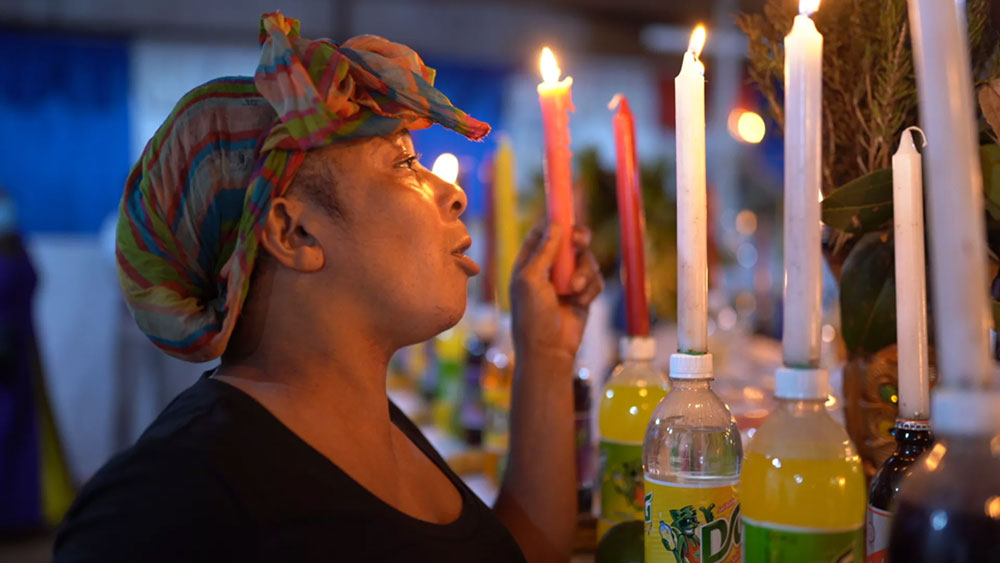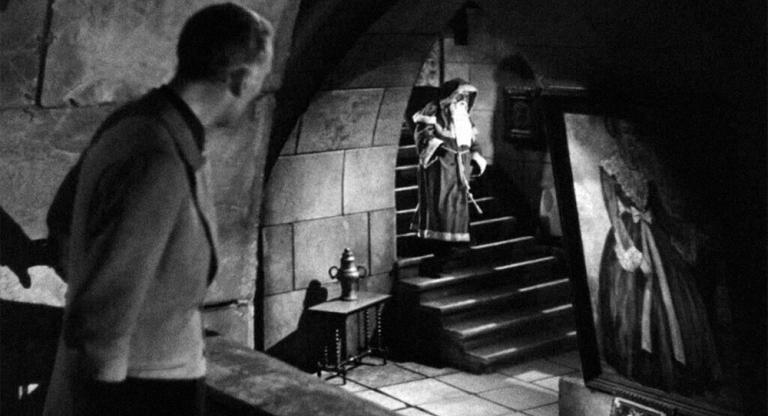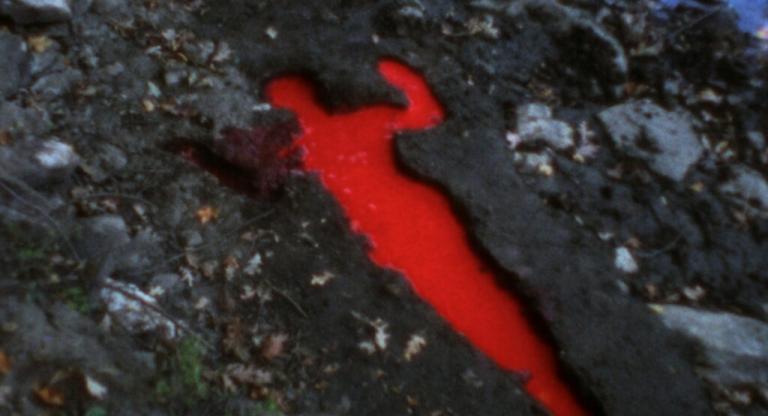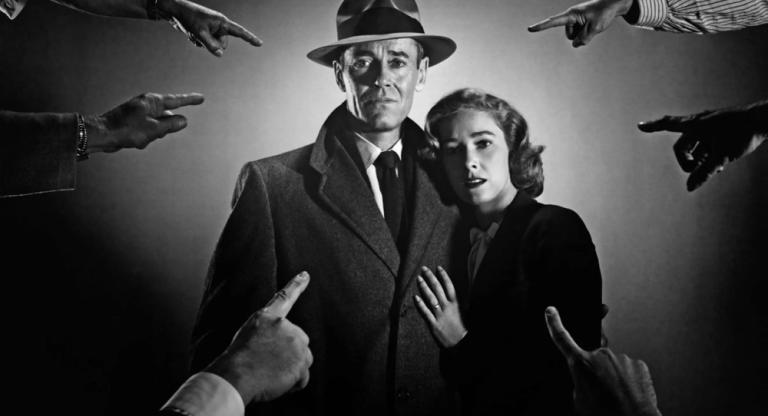Curtis Caesar John, who founded the nomadic cinema Luminal Theater to showcase films about Black diaspora across the country, began programming Caribbean Cinema at BAM in 2009. “As a child of Caribbean parents, it was important to me to get the perspectives, voices and themes of the Caribbean diaspora and its filmmakers out to audiences, and what better place to accomplish that than at BAM and in Brooklyn—home to the largest amount of people from the Caribbean outside of the region itself,” John wrote via email. This year’s iteration of the Caribbean Film Series focuses on the rediscovery of the past, family histories, and familial grief. In Wilmark Var’s Brave (2021) and Nyasha Laing’s Kumina Queen (2022), both filmmakers film processes in which they tap into their ancestral legacies and show their families’ forgotten spiritual practices today. In doing so, they are able to confront and salvage their families’ ancient traditions after years of colonial erasure. In tracing their mother’s return to Haiti in honor of their late grandmother’s death, Var delivers a tender documentation of the communal process involved in mourning a Vodou priestess. The question of how communal traditions and stories are carried through generations of colonial erasure is constantly addressed in this series, wherein the past collapses with the present.
In Kumina Queen (pictured at top), the filmmaker Nyasha Laing assembles archival footage of ancient Kumina dance practices. Despite these practices’ heralded status as a driving force in Jamaican culture, its creators were originally ostracized for being witches. By documenting the legacy of their ancestral rituals, Laing explores what elements of Kumina identity remain in Jamaica’s current population after centuries of erasure. The collection of fragmented memories Laing films brings together several narrative practices, establishing a sort-of cinematic collective memory. The serendipitous repetitions and connections that arise from her filming of archival material asks us to reconsider our own relationship to ourselves and our family history. The historical assemblage of dance and music seen in the film invites a call and response, asking the viewer to consider their body expansively as a force caught between a labyrinth of ancestral rituals and the overlooked histories that come before us.
Ian Harnarine’s Doubles (2023) also employs the use of repetition, but does so to illustrate how the shared cultural activities and behaviors between an estranged father and son point to their growing intimacy. The film deals with how race and power are transmitted through both everyday activities—gossip around the table during card games, discussions on the value of land deeds at the pool table—and exceptional moments in life—when negotiating the value of your labor and culinary knowledge with a foreign `boss, when paying for medical bills for a dying family member. Briefly, Doubles follows a Trinidadian street vendor who must travel to Toronto and decide whether he will help his estranged father, who is on the verge of death. Reflecting on his own life, the filmmaker reveals how a migrant family’s secrets influence their political reality, gesturing at what it means to release ourselves from the resentment wrought by previous generations. And, drawing upon his own experiences with grief and migration, Harnarine delivers an oblique self-portrait, guiding viewers through a poignant meditation on what migrants lose in their search for a better life. Thus, intimacy and grief are not only his subject, but integral to his creative process.
We first meet Danhi, the film’s main character, at the Temple in the Sea, a former cremation site in Trinidad. This introductory location, which Harnarine himself has attended for some of his own family members’ cremation ceremonies, sets the tone for the film. It is at once vibrantly colorful and mournful. (Harnarine is a trained physicist, which must have taught him the physics of light and heat.) Wide shots of the glittering ocean and white flags lined on the beach present a dynamic stillness that the film transmits with its mood, a pervasive sense of in-betweenness that’s present in the horizon line being shown. A close-up of old ceramic vessels being scattered by waves conveys the sense that we are also being washed up on the shore, stuck and adrift. To break the serious tone, the narrator says: “I come from the 104th generation Brahmin, I am of the highest caste. That is a joke, I come from a long line of poor people.”
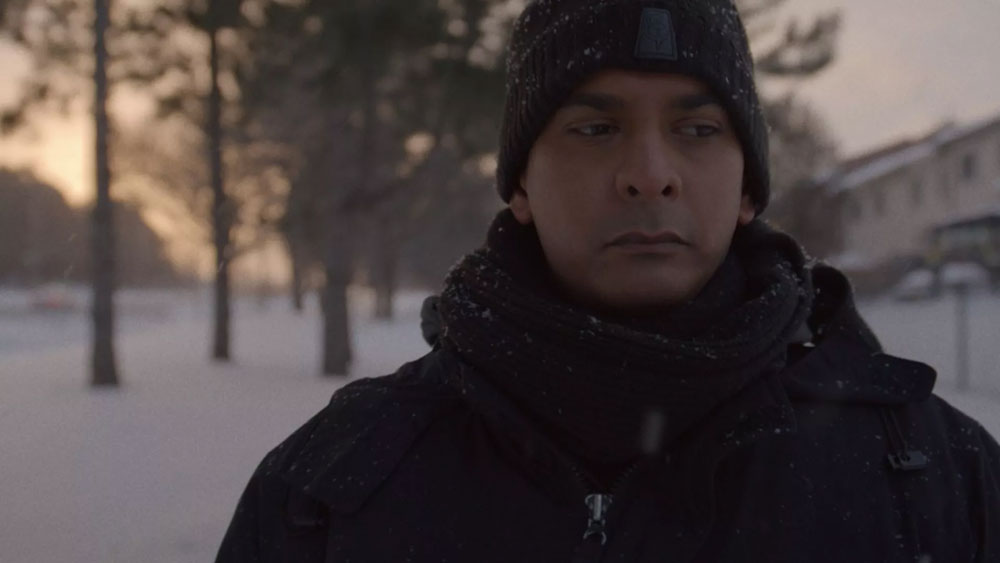
Danhi lives an unsatisfying life in Trinidad, spending most of his time selling doubles—a common street food—with his mother outside of their shared home. While Harnarine shows Danhi’s life outside of making doubles—namely, playing pool with a friend and attending the aforementioned gossip-riddled card games with his mother and her friends—it becomes apparent his life prevents him from living out his true desires. The film’s timeless insights are the result of how it traces the process of grieving. The film’s title, which initially refers to the street food Danhi sells, comes to represent the ways in which we see ourselves in our lineages as the result of generational secrets and relationships—as something more than our individually accumulated experiences. Near the beginning of the film, when Danhi realizes the extent of his father’s secrets—a concealed fatal illness, lack of money, and a daughter—he becomes at once angry and tender toward him. When Danhi tells his mother about his father’s illness, she whispers to him over FaceTime: “Just don’t get like he.” In response, Danhi proceeds to maintain an appearance of strict business with his father, as if to enact emotional revenge on him and reject the possibility of doubling his lifestyle.
At the height of Danhi’s blunt coldness toward his father, he confronts him about the lies he kept after leaving him and his mother. “All I want to do is look you in the eye, and make sure I never see myself,” Danhi says. As viewers, we’re asked to question our own relationship to his cutting words. Where do we find resonance with Danhi and his refusal toward his own kin? When both men face off in silence, they do so in a small kitchen. The choreography of the moments that follow— Danhi turning to leave and his father losing his balance—is strikingly intimate as a result of the condensed environment they find themselves in, and contrasts the ethos of Danhi’s resentful attitude elsewhere. Harnarine hints at how Danhi is forced to release himself from the pride that prevents him from being intimate, which eventually leads him to discard the shadow of his vaunted autonomy.
Over the course of the film, Harnarine also hints at how the passing down of recipes and cultural traditions keep people from becoming dominated by their circumstances and allows them to traffic between interior, social, and even ancestral worlds. This is made particularly clear when Danhi, beginning to engage with his father as someone to "get to know," prepares doubles in his presence for the first time. Wearing a matching set of pajamas in a shared domestic space, their own doubling becomes self-evident.
Harnarine resists the temptation to deal grief in consumptive scenes. Instead, he stays with the relational story between the estranged father, son, and the unexpected step-sister that initially triggered Danhi’s animosity toward his father. By the end, the characters’ lives are still defined by their relationship to the economy but the filmmaker’s emphasis on the intimacy generated by the familial act of making doubles without any financial incentive suggests that families are not merely about money relations. Although one may not break the cycles of poverty wrought by histories of colonial violence, the act of passing down family traditions activates intimacy by generating interconnection across generational lines and creating new forms of belonging for those who are displaced and forced into currents of migration. Danhi takes on many aspects of his father’s life and opens a doubles restaurant with his step-sister. He manages to stop worrying about whether he is doubling his father and lifts himself out from his desperate search for individuality, which had been preventing him from connecting with his family’s legacy, one that had been murked by power and colonial history.
The film circles back to its point of origin: the Temple in the Sea in Trinidad, where Danhi is attending his father’s cremation. The camera catches Danhi’s eyes moving from the ocean’s horizon to burning flames, which are multiplying in their strength. It is an unyielding image: the burning coffin against the palette of the sunset landscape, teeming at once with closure and innumerable questions. Harnarine ends his film between dimensions, as if history and the afterlife are one in the same.
"The Caribbean Film Series" runs February 9 - 10 at BAM
